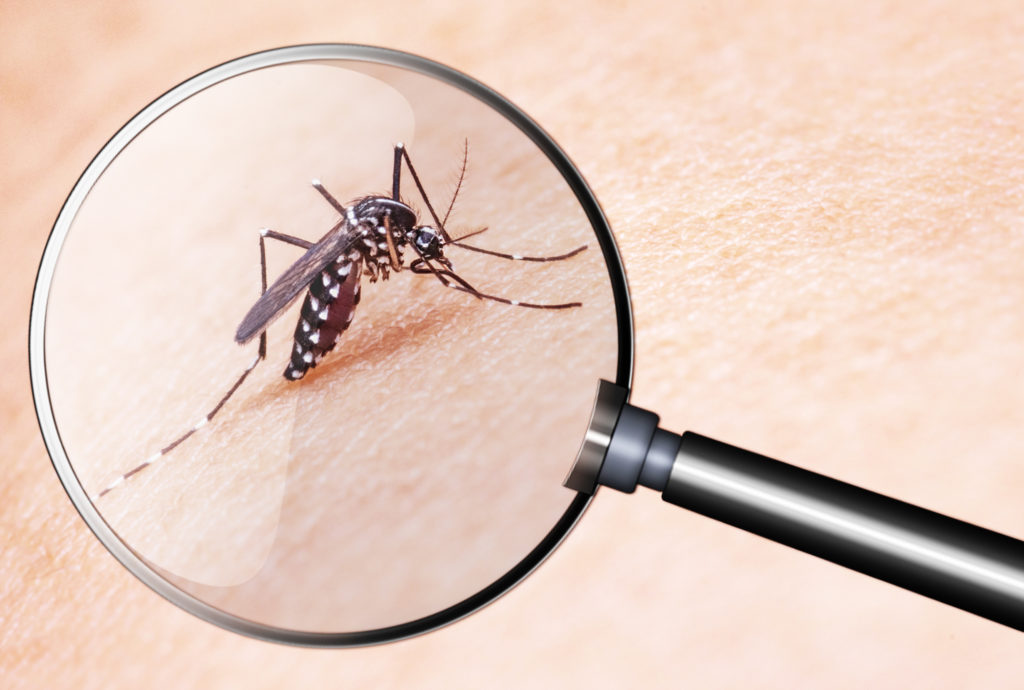New method for malaria control developed
What happens if one adds an insect-killing fungus with the DNA of spider venom? It is the most successful non-chemical mosquito Killer, the there are currently arises. An American research team created a genetically modified fungus that is for mosquitoes absolutely fatal. In a test area in Africa, for example, 99 percent of a mosquito population have been destroyed. The mushroom with spider venom-DNA is to be used as a new method for malaria control.
Researchers at the University of Maryland found new ways to fight Malaria. As the basis of their research on the fungus Metarhizium anisopliae, which is known that it affects mainly insect and this slowly kills served. The research group modified spider the fungus with the DNA of the Australian Funnel-web. In this way, the fungus kills much faster and infects only mosquitoes. At the first Try in Africa, the fungus was able to destroy 99 percent of the mosquitoes in a closed area. The results of the research were recently presented in the prestigious scientific journal “Science”.

Malaria is a global threat
Malaria is one of the most dangerous infectious diseases in the world. It is widely used in over 100 countries. According to the Robert Koch-Institute, there are about 200 million people per year suffer from it. About 600,000 people die annually of Malaria – mainly children under five years of age. There is no effective treatment or vaccination against the disease. In addition, decades has made long use of insecticides, the mosquito strains resistant to insecticides. Since man is virtually defenseless against Malaria, scientists conduct research worldwide to develop new methods for healing and prevention. Researchers at the University of Maryland, a breakthrough now.
Two Killer combines
The researchers United two well-known insect Killer from nature in a form of life. The fungus Metarhizium anisopliae has been used for over 100 years, biological pest regulation. It affects mainly beetles, White fly and mites. After the attack, he multiplies and finally kills the host. After the death of he grows out of the body and forms new spores. As a further effective Insecticide, the venom of the Sydney is funnel-web spider. From the spider’s poison, the insect venom has been developed “Hybrid”, which is approved in the USA for direct application to crops for the control of agricultural insect pests.
A new form of life arises
In the laboratory, the research group added to the DNA of the fungus Metarhizium anisopliae with genetic information, from the venom of the Sydney funnel-web spider (Atrax robustus). Also modified the fungus so that it affects mainly mosquitoes. Out came the transgenic fungus Metarhizium pingshaense to be used for the targeted destruction of mosquito populations that transmit Malaria.
The first use
In order to test the fungus outside of the laboratory, built the research team a test site in the malaria-at the end of Burkina Faso, mix in Africa. They spanned mosquito nets over an area of 600 square meters and below this surface is divided into three chambers. One chamber was treated with the new fungal, a second chamber contained the original, non-modified fungus and a third chamber remained untreated. In each chamber, a 1,500 mosquitoes were exposed (500 females and 1000 males). The chambers were then observed over a period of 45 days.
A new biological mosquito Killer
After 45 days, a clear result emerged. In the untreated chamber 1,396 the mosquitoes were still alive. The chamber with the original Metarhizium fungus consisted of 455 mosquitoes. In the chamber with the transgenic fungus, only 13 of the mosquitoes survived. 99 percent of them were destroyed by the fungus. “No, transgenic malaria control is to try on the way to the actual field so far gekommen“, the main author, Dr. Brian Lovett emphasized in a press release announcing the study results.
The fungus is a threat to other insect species?
“These fungi are very selective,” says a fellow student of Professor Raymond St. Leger. The researchers have matched the fungus specifically at the chemical signals of mosquitoes. To ensure that your modified fungus produced only the poison in the body of mosquitoes, tested the researchers the fungus to other insects. As it turned out, for honey bees and other beneficial insects in no danger.
The research team is waiting for a start shot
The international Team now hopes to launch in order to test the fungus under real conditions. Before that, however, there are a lot of regulatory and social points to clarify. “By following the protocols of the EPA and the WHO, very carefully and closely with the Central government, local government and the local municipalities work together in order to gain acceptance, we already have a barrier durchbrochen“, says Lovett. He holds a soon-to-be use in a real environment is likely. (vb)
